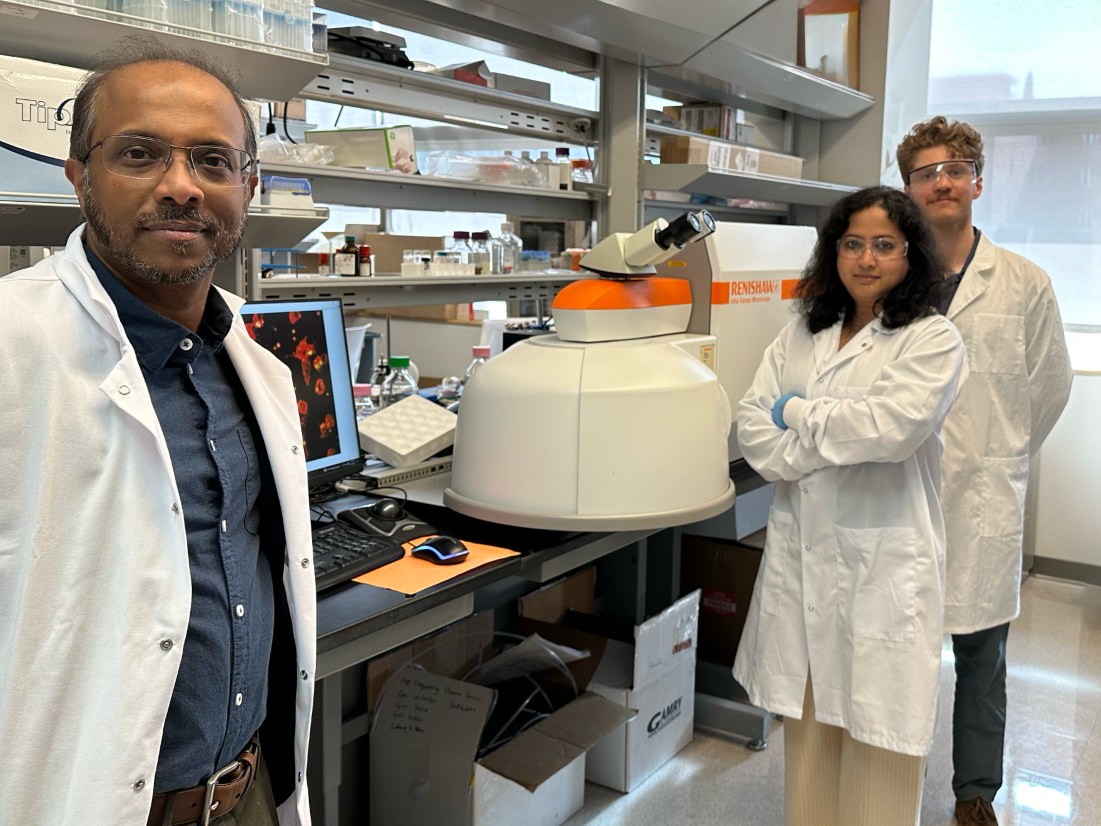A simple biomaterial-based strategy that can influence the behavior of cells could pave the way for more effective medical treatments such as wound healing, cancer therapy and even organ regeneration, according to a research team at Penn State.
Tag: Materials Research Institute
Atoms in advanced alloys find preferred neighbors when solidifying
A discovery that uncovered the surprising way atoms arrange themselves and find their preferred neighbors in multi-principal element alloys (MPEA) could enable engineers to “tune” these unique and useful materials for enhanced performance in specific applications ranging from advanced power plants to aerospace technologies, according to the researchers who made the finding.

‘Better than graphene’ material development may improve implantable technology
Move over, graphene. There’s a new, improved two-dimensional material in the lab. Borophene, the atomically thin version of boron first synthesized in 2015, is more conductive, thinner, lighter, stronger and more flexible than graphene, the 2D version of carbon. Now, researchers at Penn State have made the material potentially more useful by imparting chirality — or handedness — on it, which could make for advanced sensors and implantable medical devices.
Thicker, denser, better: New electrodes may hold key to advanced batteries
To improve battery performance and production, Penn State researchers and collaborators have developed a new fabrication approach that could make for more efficient batteries that maintain energy and power levels.
Materials Research Institute names five Roy Award winners
Three Penn State faculty and two graduate students have received the 2021 Rustum and Della Roy Innovation in Materials Research Award.
National 2D materials research center wins NSF funding
Operated by Penn State University’s Materials Research Institute in partnership with Rice University, ATOMIC has won $1.5 million in Phase II funding that will allow it to add both a new academic partner, Boise State University, and new industry partners. ATOMIC currently has 13 industry partners and five government partners.
Researchers world-wide find great value in ReaxFF reactive force field
More than 1,600 researchers in six of the world’s seven continents have requested parameters for a ReaxFF reactive force field developed by a Penn State researcher and used as a valuable research tool in fields as varied as biomaterials, polymers, batteries and 3D printing.
Materials researcher honored with ACerS’s 2021 Orton Lectureship
The American Ceramics Society (ACerS) has selected Clive Randall, director of the Materials Research Institute and distinguished professor of materials science and engineering, to give the 2021 Edward Orton, Jr. Memorial Lecture at the 2021 ACerS’s Annual Meeting.
Graduate student finalists show their work during research elevator pitch competition
Penn State graduate students in materials science and materials engineering learn valuable career skills such as concise presentation of their research and win prizes during the 2021 Millennium Café PPG Elevator Pitch Competition on May 15 and May 18.
NSF renews funding for Two-Dimensional Crystal Consortium
The National Science Foundation (NSF) announced a renewal of funding for the Materials Innovation Platform (MIP) national user facility at Penn State’s Materials Research Institute (MRI), the Two-Dimensional Crystal Consortium (2DCC). The 2DCC is one of four MIPs in the United States and was awarded $20.1 million over five years, an increase of 13% above the initial award in 2016.
Helpful, engineered ‘living’ machines in the future?
Engineered soft autonomous materials that respond to stimuli hold great potential for a variety of applications from maintaining infrastructure to cleaning the environment.